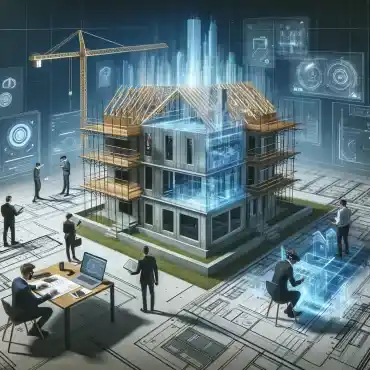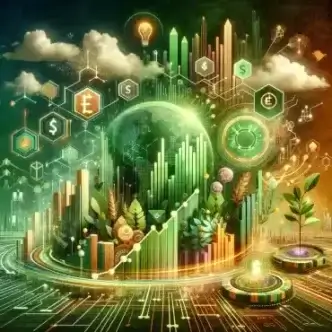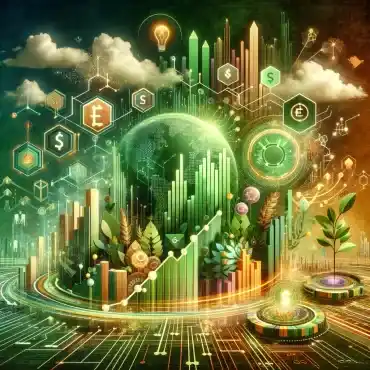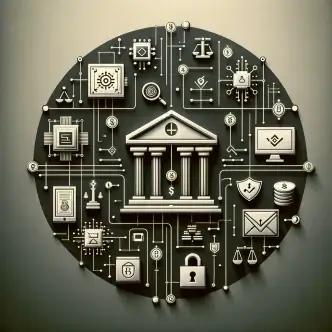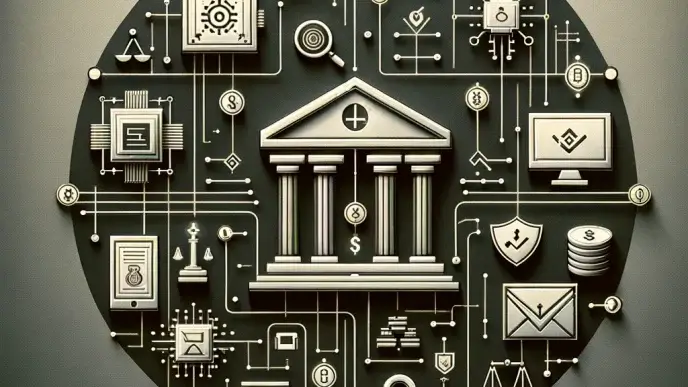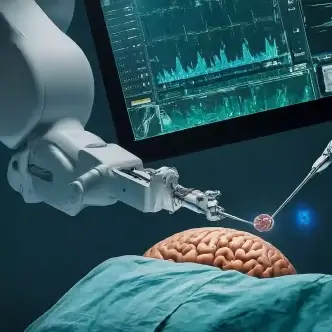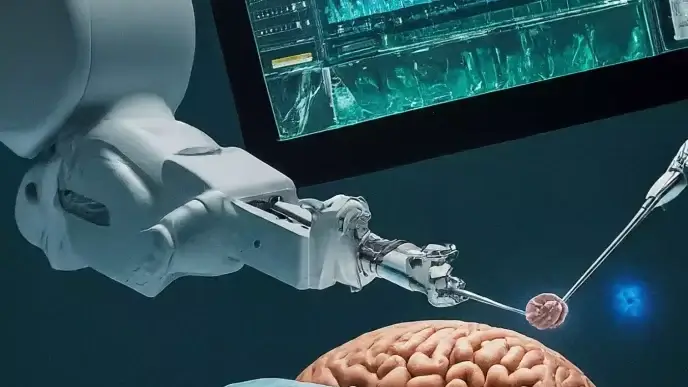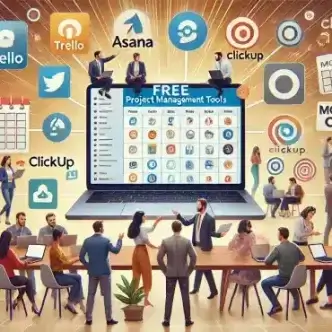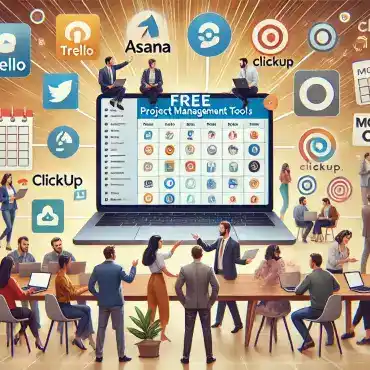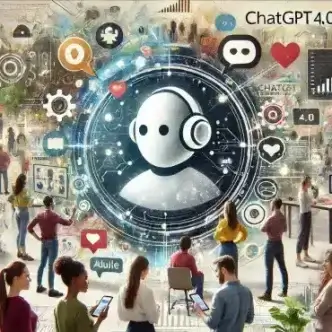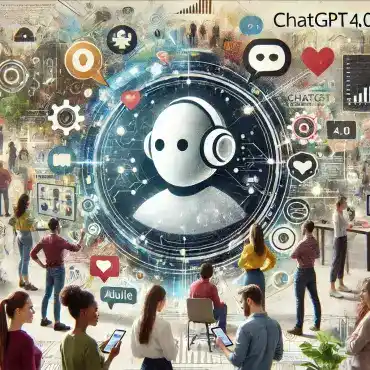Late last year, Gartner put out a list of 10 strategic technology trends for 2024. For enterprises, one of them would be of great interest — “Augmented-Connected Workforce” or ACWF. In an era where technology and human ingenuity intersect more than ever, this strategy for “optimizing the value derived from human workers,” as Gartner puts it, can be considered the blueprint for the future of work.
According to Gartner, 25% of CIOs will use ACWF initiatives through 2027, to reduce time to competency by 50%.
Imagine a workplace where artificial intelligence (AI) doesn’t replace humans but rather amplifies their capabilities, where virtual reality (VR) and augmented reality (AR) transcend the boundaries of physical space to bring teams together, and where the Internet of Things (IoT) ensures seamless communication between devices and people. The aACWF is a testament to how far we’ve come in integrating technology into our daily work lives. It’s about leveraging the best of both worlds—human intuition and creativity combined with machine precision and speed—to create a more efficient, collaborative, innovative, and adaptable workplace.
In this article, we’ll dive deep into the heart of this transformative concept, exploring its benefits, challenges, and the exciting possibilities it holds for the future of work. Join us on this journey to understand how technology is not just changing the way we work, but also redefining what it means to be connected, productive, and human in the digital age.
Understanding the Augmented-Connected Workforce
At its core, the augmented-connected workforce is the seamless convergence of artificial intelligence (AI), augmented reality (AR), virtual reality (VR), and the Internet of Things (IoT) to create a workspace that is not just smart, but also intuitively human.
Artificial Intelligence (AI): A personal assistant that never sleeps, tirelessly analyzing data and offering insights to help you make better decisions. That’s AI at work in the augmented-connected workforce. It’s like having a supercomputer in your pocket, ready to crunch numbers, predict trends, and even automate routine tasks, freeing up humans to focus on more creative and strategic endeavors.
Augmented Reality (AR) and Virtual Reality (VR): These technologies act as a bridge between the digital and physical worlds. With AR, you can overlay digital information onto the real world, like a mechanic seeing instructions projected onto a piece of machinery they’re fixing. VR, on the other hand, transports you into a completely digital environment, perfect for immersive training sessions or virtual meetings that feel as real as being in the same room.
Internet of Things (IoT): This is the glue that holds the augmented-connected workforce together. IoT devices, from smart sensors to wearable tech, are like the nervous system of the workplace, constantly collecting and transmitting data. This ensures that everything is interconnected, from your office’s lighting and temperature to the health and safety of remote workers.
Together, these technologies enhance human capabilities in unprecedented ways. They make communication more immediate and effective, whether you’re chatting with a colleague via a smartwatch or collaborating on a virtual whiteboard. They enable seamless collaboration across distances, breaking down geographical barriers and creating a truly global workforce. And most importantly, they augment our human skills, allowing us to be more productive, more innovative, and more connected than ever before.
Benefits of an Augmented-Connected Workforce
The augmented-connected workforce is a catalyst for a multitude of benefits that drive the modern workplace towards excellence.
Increased Productivity: Consider a manufacturing plant where AI-powered robots work alongside human operators. The robots handle repetitive, physically demanding tasks, while the humans focus on complex problem-solving and quality control. This collaboration leads to faster production times and higher output, without sacrificing accuracy or safety. For example, BMW’s use of collaborative robots in their assembly lines has resulted in a more efficient production process, allowing workers to focus on more intricate tasks.
Enhanced Collaboration: In a world where distributed workforces are increasingly common, connected technologies like cloud-based collaboration tools and AR meeting platforms bridge the gap between physical distances. Teams can brainstorm in real-time on digital whiteboards, share files instantly, and even feel like they’re in the same room with VR meetings. Microsoft Teams and Slack have become essential tools for many organizations, enabling seamless communication and collaboration across different locations.
Improved Decision-Making: With IoT devices collecting data at every turn and AI algorithms analyzing this data, businesses can gain unprecedented insights into their operations. This data-driven approach leads to more informed decision-making, reducing guesswork and enhancing strategic planning. For instance, UPS uses advanced analytics to optimize delivery routes, saving millions of gallons of fuel and reducing delivery times.
Greater Flexibility and Work-Life Balance: The ability to work from anywhere is a hallmark of the augmented-connected workforce. IoT devices and cloud-based platforms mean that employees can access work-related information and tools from their home, a coffee shop, or even while on vacation. This flexibility allows for a better balance between professional and personal life.
Case Studies and Real-World Applications
Some companies are already embracing this transformative shift. For example, Boeing, an aerospace company, uses smart glasses for aircraft assembly. What this means is that technicians can access information and instructions in real time, such as blueprints and assembly processes. And what a decade ago was make-believe in movies, is not a reality, as this information can be superimposed on real objects in front of the technician. The result? Quick access to complex knowledge, fewer errors, and better operational efficiency.
 Image generated by DALL-E
Image generated by DALL-E
Healthcare: Telemedicine and Remote Monitoring
In the healthcare industry, the use of IoT devices and telemedicine platforms has revolutionized patient care. For example, companies like Teladoc Health offer virtual consultations, allowing patients to receive medical advice without leaving their homes. Additionally, wearable devices can monitor vital signs in real time, enabling doctors to keep track of their patients’ health remotely. This has not only improved access to healthcare but also increased patient satisfaction and outcomes.
Manufacturing: Smart Factories and Predictive Maintenance
In the manufacturing sector, the concept of the “smart factory” is gaining traction. Companies like Siemens have implemented IoT sensors and AI algorithms to monitor equipment and predict maintenance needs before breakdowns occur. This predictive maintenance approach reduces downtime and increases efficiency, leading to higher productivity and lower costs.
Retail: Personalized Shopping Experiences and Inventory Management
Retail giants like Amazon and Walmart are leveraging augmented-connected workforce technologies to enhance the shopping experience and streamline operations. AI-powered recommendation engines provide personalized suggestions to customers, while IoT devices track inventory levels in real time, ensuring that shelves are always stocked. This has led to increased customer satisfaction and loyalty, as well as improved operational performance.
Challenges and Considerations
While the augmented-connected workforce offers numerous benefits, it also presents several challenges and considerations that must be addressed to ensure its successful implementation.
Privacy Concerns and Data Security: As workplaces become more connected and data-driven, the risk of privacy breaches and cyberattacks increases. For instance, the use of IoT devices can expose sensitive information if not properly secured. Companies must invest in robust cybersecurity measures and establish clear privacy policies to protect both employee and company data.
The Digital Divide: Not all regions or communities have equal access to technology and high-speed internet. This digital divide can exacerbate inequalities, as those without access are left behind in the shift towards an augmented-connected workforce. Efforts must be made to bridge this gap, ensuring that everyone has the opportunity to participate in and benefit from these technological advancements.
Training and Adaptation: The introduction of new technologies requires employees to learn new skills and adapt to different ways of working. For example, using VR for training or collaboration may be a novel experience for many. Companies need to provide comprehensive training programs and support to help employees transition smoothly into these new paradigms.
Ethical Considerations and Human-Centric Approaches: As technology becomes more integrated into the workforce, it’s crucial to maintain a focus on ethical considerations and human-centric approaches. This means ensuring that technology enhances, rather than replaces, human work and that it is used in a way that respects individual rights and dignity. For example, AI should be implemented transparently, with mechanisms in place to prevent bias and ensure fairness.
Addressing these challenges requires a concerted effort from businesses, governments, and society as a whole. By acknowledging and tackling these issues, we can pave the way for a more inclusive, secure, and human-centered augmented-connected workforce.
Future Outlook
As we look ahead, the future of the augmented-connected workforce is poised for even greater advancements, driven by the rapid evolution of technologies like AI, 5G connectivity, and beyond.
The Rise of AI and Machine Learning: Artificial intelligence is expected to become even more sophisticated, with machine learning algorithms capable of handling complex tasks and making autonomous decisions. This could lead to a shift in the nature of work, with AI taking on more analytical and decision-making roles, while humans focus on creative, strategic, and interpersonal tasks.
The Impact of 5G Connectivity: The rollout of 5G networks will provide the backbone for a truly connected workforce. With faster speeds and lower latency, 5G will enable real-time collaboration, immersive AR/VR experiences, and seamless communication between IoT devices. This will further blur the boundaries between physical and digital workspaces, allowing for more flexibility and efficiency.
The Integration of Emerging Technologies: Technologies like blockchain, quantum computing, and edge computing are set to play a more prominent role in the augmented-connected workforce. Blockchain could enhance security and transparency in data sharing, quantum computing might solve complex problems at unprecedented speeds, and edge computing could bring data processing closer to the source, reducing latency and bandwidth usage.
The Role of Human Workers: Despite the increasing automation and connectivity, the human element will remain crucial. The future workforce will need to adapt by acquiring new skills, such as digital literacy, critical thinking, and emotional intelligence. Companies will need to foster a culture of continuous learning and innovation to ensure that their employees can thrive in this evolving landscape.
The Bottomline
It is clear that the benefits of the paradigm shift ushered in by ACWF are remarkable: from increased productivity and enhanced collaboration to improved decision-making and a happier workforce. However, these advancements are not without challenges: privacy concerns, data security, the digital divide, and the need for ongoing training and ethical considerations are all critical issues that must be addressed.
Looking ahead, the continued evolution of AI, the advent of 5G connectivity, and the integration of emerging technologies promise to further revolutionize the way we work. As we embrace this future, it’s crucial to strike a balance between leveraging technological innovations and maintaining a human-centric approach. By doing so, we can create a workforce that is not only more efficient and collaborative but also adaptable to the ever-changing landscape of work.
____________
Written by: TEChquity india

